We arrived into Port Stanley, Falkland Islands on Tuesday, January 28. Unfortunately, the bleak weather and 45 mph winds will not permit us to launch our tenders for the ½ mile to shore. The Harbormaster hailed our ship to advise that their port docks were taking on boarding waves and that it would not be prudent to come ashore. We had no choice but to weigh anchor and continue onward, towards the South Shetland Islands and the beginning of the Antarctica peninsula.
At 5:30am, we arrive at our entrance to the South Shetland Islands. Admiralty Bay and Martell Cove on King George Island come into view. This is our 1st day of 4, cruising the region of the Antarctica Peninsula. As we make our slow and cautious approach, we begin to see a jagged black land mass covered with white and blue ice emerge out of the fog. Stark, dramatic, desolate. Surreal, breathtaking, and awe-inspiring! And even those words fall short of what you really feel when you stand before the immensity of this remote place. 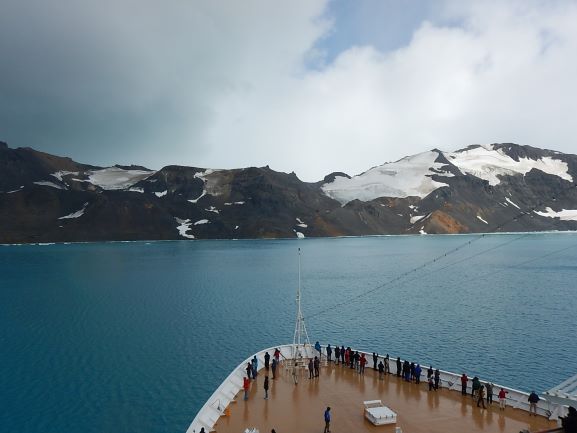
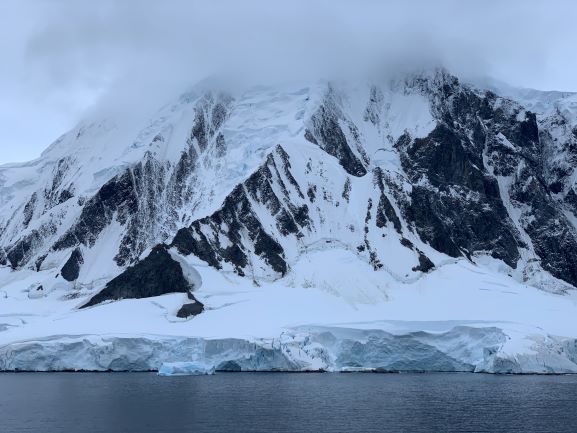
Floating turquoise “growlers” (any iceberg over 1 meter) increase in number and size. We find the green shack of the Argentina Research Station, called Copacabana, along with some penguin and cormorant populations. Other Research Stations in the area include Chile, Poland, Ecuador and a brand new, $100 million Brazilian Research Station built by Chinese contractors. 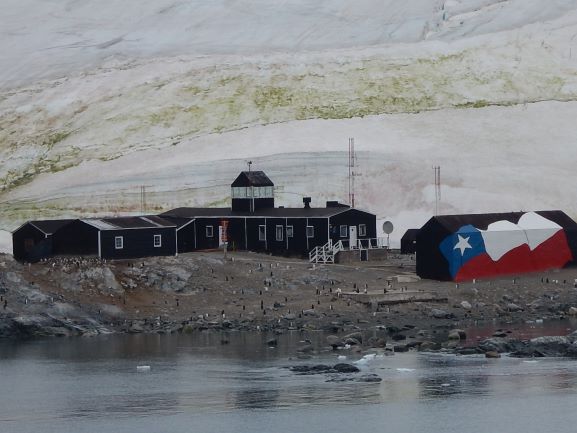
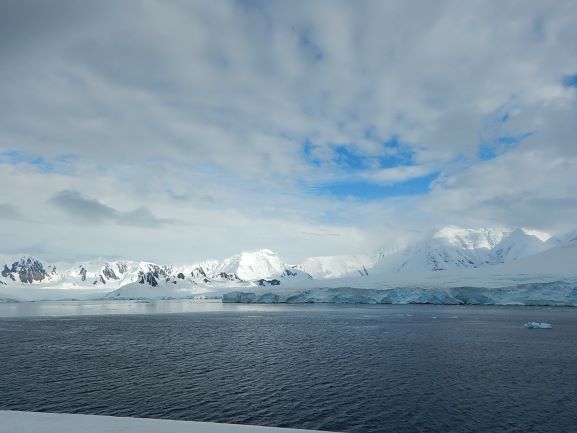
We were fortunate to watch pods of penguins “porpoising” as they feed on the surface of the water. A humpback whale is seen in the distance, and we are assured there will be more to come. The sun occasionally peeks through, illuminating the brilliance of each glacier, its sparkling facets, and impossibly turquoise colors. 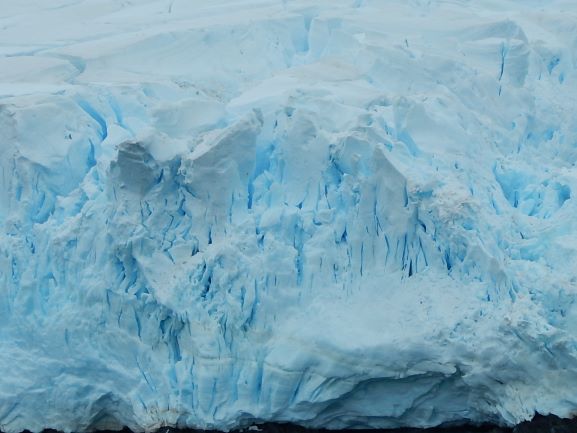
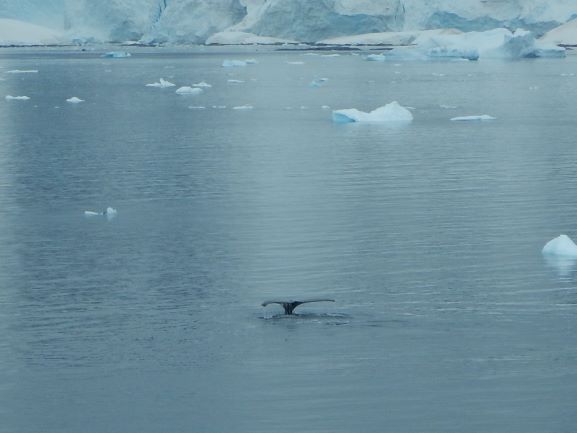
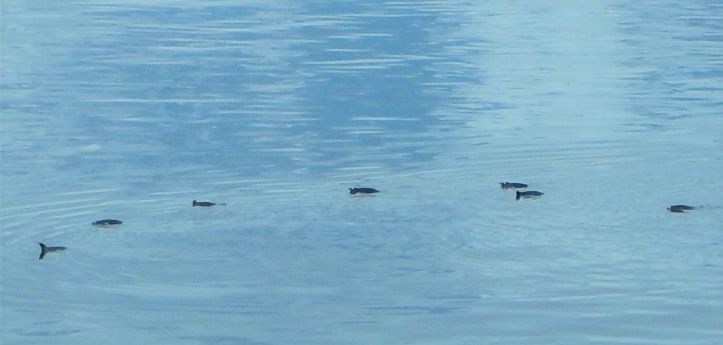
There are 3 members of a professional Antarctic Team aboard, providing us with narratives as we cruise through the channels, as well as open Q&A sessions throughout these 4 days. A geologist, zoologist and culturalist, provide us with a wealth of information. By 10:45am, we exit Admiralty Bay and will head to Deception Island by 4pm. Deception Island named so for its circular or cul-de-sac shape, and early explorers were disappointed to find a dead end after entering the narrow passage. We view our first Gentoo Penguin rookery just outside its entrance. Actually, we smelled it first. Then heard it. Then saw the multitudes of waddling bodies.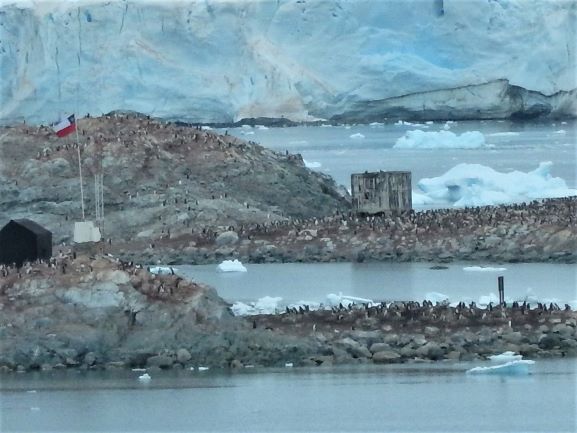
Our passage over the next four days, takes us through the Neumayer Channel by the southeast coast of Anvers Island, Paradise Harbor featuring Waterboat Point and Brown Station, the Gerhache Strait, Wilhelmina Bay, Bransfield Strait and Errera Channel. Unfortunately, the scheduled visit with the Palmer Research Station Team cancelled due to the impending coronavirus outbreak. 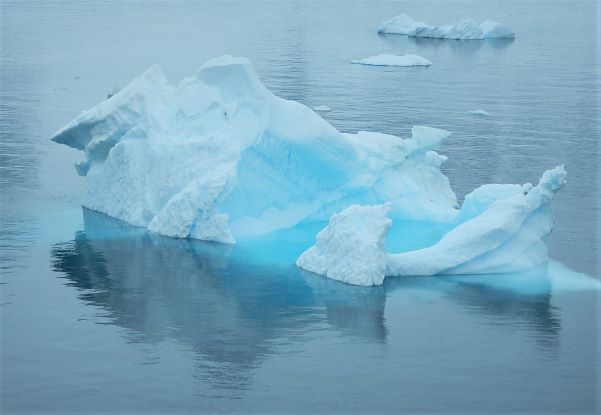
Lamier and Charlotte Harbors both contained too much pack ice for us to transit completely through, but we snuck in as far as we could for some incredible scenery. And finally, as we made our way north again through the Antarctic Sound, it was an incredible bathtub of humpback whales. Their flukes were everywhere!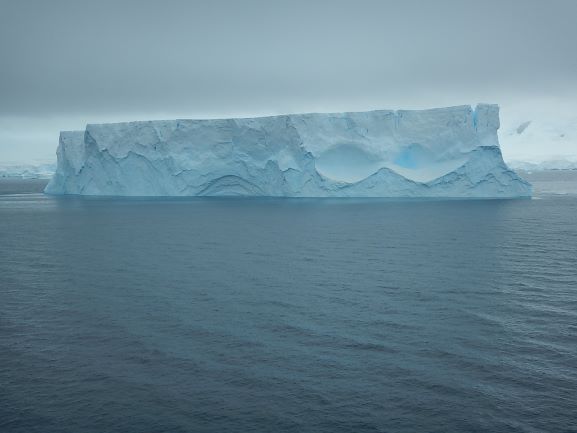
Because we are in the southern hemisphere’s Summer, temperatures are a relatively pleasant 30-37°F., which allows for plenty of on-deck viewing and photography. Sunrise is about 4am and sunset around 10:30pm. On the fourth day, some fog rolled in. The melancholy cadence of our foghorn blowing every 3 minutes added to the mystic of this isolated place on Earth.
Antarctica boasts some of the most profound statistics:
• Size: 4.59 million square miles
• Avg sea ice coverage in Summer: 1.5 million square miles
• Avg sea ice coverage in Winter: 7.3 million square miles
• Avg thickness of ice sheet: 7,546 feet
• Highest mountain: Vinson Massif 16066 ft.
• Lowest recorded temperature: Minus 128.2°
• Maximum wind speeds: 186+mph
• Number of tourists (2017-18): 51,707 (9,131 of those were on cruise-only trips where passengers did not go ashore)
• Number of scientific personnel (77 bases): Summer = 4,682; Winter = 1,121
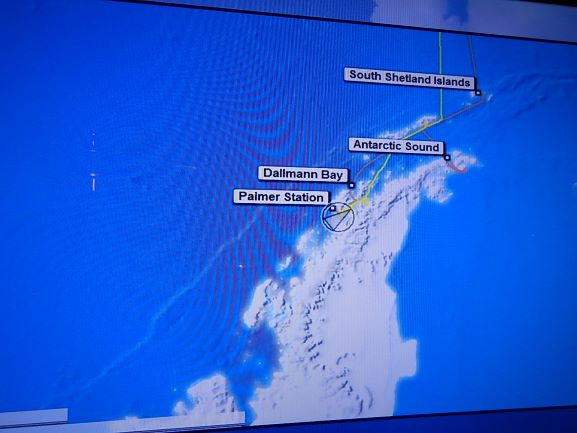
Despite the harsh environment of Antarctica, it is home to a wide variety of brave wildlife and birds. We were fortunate to see:
• Whales: Minke, Humpback and Orca
• Penguins: Gentoo, Chinstrap, Adelie and Magellanic
• Seals: Fur, Crabeater, Leopard and Weddell
• Birds: Albatross, Petrel, Snow Petrel, Snowy Sheathbill, Terns, Skua and Kelp Gulls
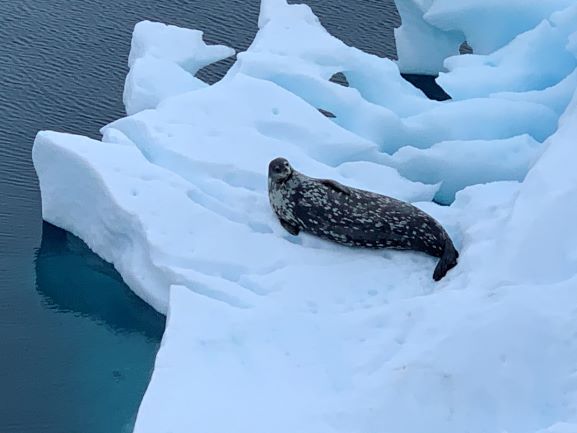
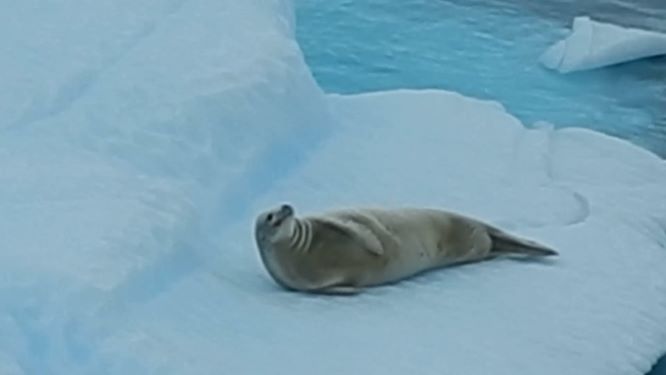
On February 2, we did what all Americans proudly do: watch the Superbowl! The ship hosted a terrific Superbowl Party the Mainstage Theater, complete with great food, football “hats” and noise makers. The game was viewed on the giant screen, and we gorged on Lobster Rolls and Mac & Cheese balls. What a fun time!
For the entire next day at sea, we were to transit the notorious Drakes Passage on our way to Cape Horn, which sailors have come to fear since the beginning of navigation. Despite its formidable reputation of vicious winds and snarling seas, we were extraordinarily lucky to find Drakes Passage rather, “Drakes Lake”, making for an uneventful passage. We were almost disappointed!
The calm waters stay with us through the following morning, and at 6:30am, the Isle of Cape Horn looms into view. And since the waters were still remarkably placid, Captain Mercer jumped on the incredibly rare opportunity for the Amsterdam to circumnavigate the entire Isle, about 10 square miles. Scores of cormorants and albatross swoop curiously around the ship. Sooty shearwaters glide just above the small wavelets. It’s an overcast morning with 30 knots of wind, but glorious rippled, flat water. As we round the windward side of the Isle of Cape Horn, the jagged stacks of rocks look like fangs coming straight out of the water, protecting this weather-beaten headland.
The East La Hornos mountaintop is shrouded in the clouds; a weak hue of sun peeking through adds a mysterious aura to this infamous and iconic world landmark. “Rafts” of albatross on the water are feeding on squid. As we circumnavigate the Isle of Cape Horn, we cross from the Southern Atlantic to the Southern Pacific Ocean and back. The demarcation line between these two oceans runs smack through the middle of this island and continues down through Antarctica.
![25hornsun[1]](https://lifeinnauticalmiles.files.wordpress.com/2020/05/25hornsun1.jpg)
In contrast to today’s idyllic sea conditions, The Horn is one of the seas most apex predators and it is believed that more than 10,000 seamen have lost their lives here. Built in 1992, the Albatross Monument stands near the old lighthouse on the point. It pays homage to sailors who have lost their lives in attempts to round Cape Horn. The lighthouse keepers are a family; husband, wife and 3 children (5,4, and 2 years old), who stay on duty for one year. 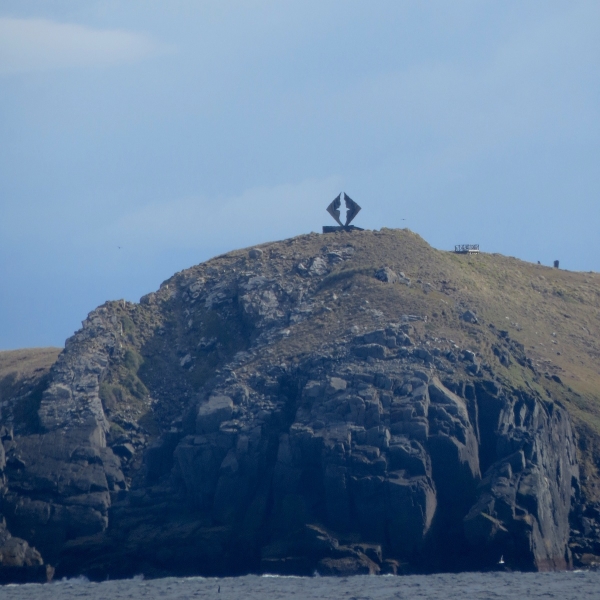
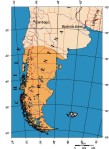 Pushing north from the Horn, we enter Patagonia and the Tierra Del Fuego region, an archipelago divided between Argentina (1/3) and Chile (2/3) with the region consisting of nearly 28,500 square miles. Looking at a chart of this area, the astonishing lacework of islands and waterways almost resembles frost crystals on a windowpane. You could spend a lifetime exploring this area!
Pushing north from the Horn, we enter Patagonia and the Tierra Del Fuego region, an archipelago divided between Argentina (1/3) and Chile (2/3) with the region consisting of nearly 28,500 square miles. Looking at a chart of this area, the astonishing lacework of islands and waterways almost resembles frost crystals on a windowpane. You could spend a lifetime exploring this area!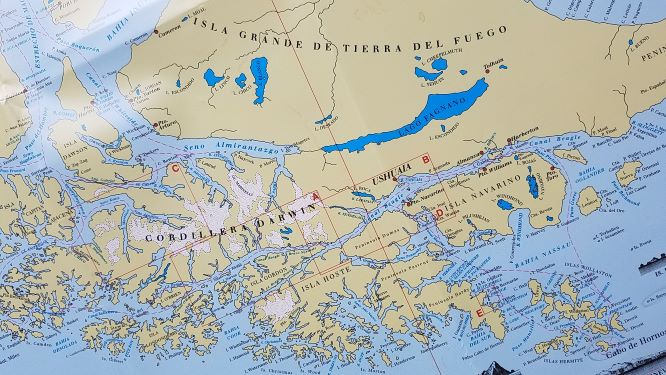
The Amsterdam works her way up towards the Beagle Channel and the port town of Ushuaia, Argentina. Often called “The End of the World”, Ushuaia is the southernmost city at 55° south latitude. This back-packer type of town is a popular launching spot for expeditions heading to Antarctica, and it attracts all sorts of free spirits; from scientists to surfers, who fill the hundreds of hostels scattered about town. The place sports a decidedly European architecture, and with the Andes Mountains looming in the distance, you might think you are more likely in the Alps versus South America.
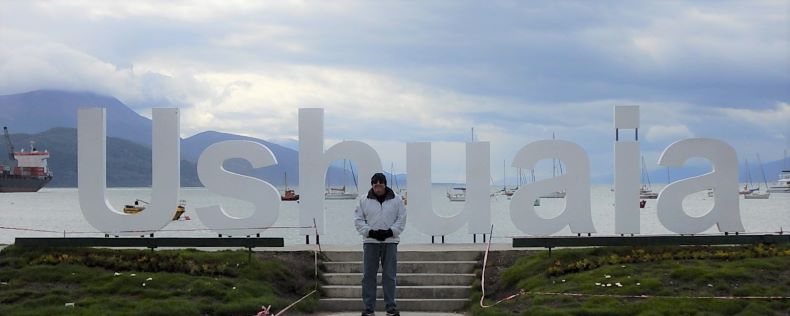
Our afternoon departure allows for some incredibly stunning scenery as we cruise through the Beagle Channel, taking in its glaciers, ice floes and waterfalls cascading down to the calm waters of the channel. Every turn is yet another photo op that just will not fit into one shot. It leaves you speechless-
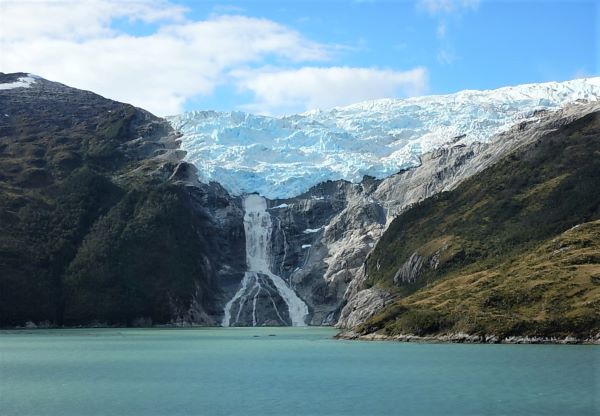
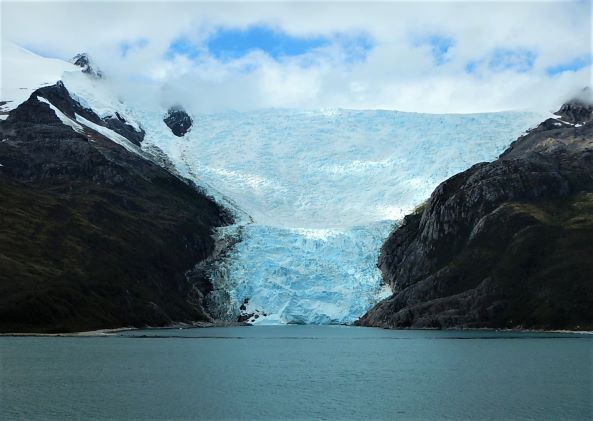
We have been blessed with such a nice stretch of wonderful weather, and today is no different, as we pull into Punta Arenas, Chile. We will explore town later, but first, we are off to nearby Magdalena Island and its penguin colony! We walk onto a rugged ferry-style scow through its forward drop-down boarding ramp. Built in 1964 in Miami, she’s provided a lot of service before becoming an odd tour boat in Chile!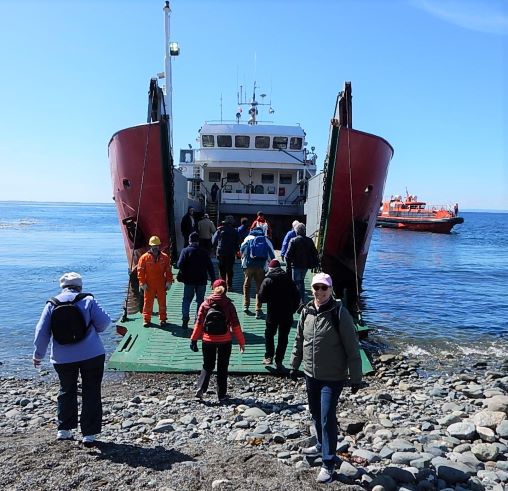
An hour and a half later, we beach the bow and storm ashore like marines. Magellanic penguins greet us immediately; as curious about us, as we are of them. Free roaming in their natural habitat, it is we humans who are kept to the open pathways that wind around the island and to its lighthouse. We are told that approximately 50,000 PAIRS of penguins nest here. Juveniles which hatched a few months ago are now molting their down.
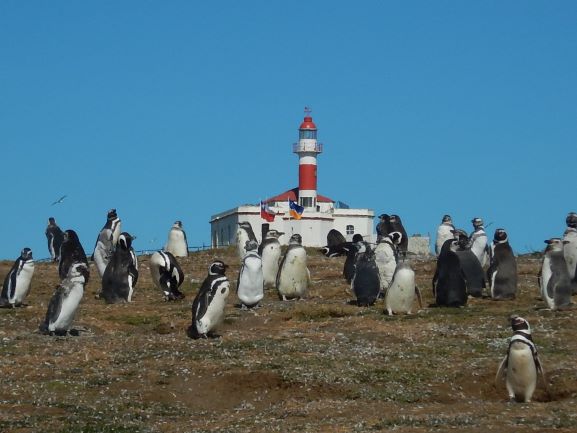
Seagulls and a species of goose also use this island as a nursery. Some young gulls did not make it; victims of the predatory Antarctica bird called Skua. Their dead carcasses are also strewn about this vast habitat. Just the natural order of things, and life goes on amid the boisterous penguin families. It was an absolute joy to amble freely amongst these cool creatures!
Later in the afternoon, we did wander around Punta Arenas, known as the ‘doorway to Patagonia’. Colorful buildings, the main square, museums rich with regional history and the most electrical cables strung from pole to pole we have ever seen.


Calm seas and sunshine continue….very unusual for this part of the world in early February. Normally, fierce west winds and rain with fog prevail. We can hardly believe our luck, especially since we will be scenic cruising the Chilean Fjords including the Sarmiento Channel and beyond for the next two days. As we ply the waters and pass points named Innocence, Conception and Trinidad, we are escorted by seals and birds and marvel at the majestic mountains mirrored in the glassy water. If a place ever looked photo-shopped, this would be it! And to beat it all, it’s warmed up enough to watch it all roll by on the aft deck with a glass of wine. I pinch myself.
On Sunday morning, February 9th, we arrive in Puerto Montt, Chile. This fishing port marks the end of the beautiful Lake District of Southern Chile. Settled by German immigrants in 1853, the German imprint is still clearly visible in the architecture, sausages, cakes, and pastries. We tender to shore to find a quiet, almost deserted town center. Chileans are not known as early risers, especially on Sunday. But it makes for great walking. After a few hours of exploring, we came upon Angelmo fishing cove, buzzing with fishing boats and ferries. The small, adjacent Tenglo Island shelters and protects the bay. Popular with locals, as well as numerous lion seals who were getting a free meal from the fisherman casting off their scraps into the water. We found a fantastic table in an outdoor café, elevated over the water to take in the entire scene, and grab some lunch. Steamed mussels and sautéed spiced shrimp were washed down with Pisco Sours, a favorite local cocktail. Bellies full, we wound our way through the village of artisans selling a myriad of Alpaca goods, leather products and lapis stones.
(Slideshow)
After one sea day since leaving Puerto Montt, we arrive at our next port of call, San Antonio, Chile. Most travelers use this port as their base for exploring Valparaiso to the north, or Santiago to the east. We opt to take an excursion out of this industrial town to visit the Metatic Vineyards in the Rosario Valley. This region produces some of Chile’s best Sauvignon Blanc, Pinot Noir and Syrah. A group of fellow passengers we’ve become friends with, all head out for what turns out to be an awfully long bus ride. We thought that the bus driver got lost, though honestly, no one seemed to mind the countryside tour through this arid part of Chile where eucalyptus trees are plentiful. And we were all in good company and spirits. We finally arrived at their beautiful vineyard and received a lengthy tour and a short wine tasting. So, the group took matters into our own hands and purchased some wine to enjoy on the long ride back. And we minded the ride back even less. Everyone enjoyed the fun day!
And now the Amsterdam charts her new course; westward across the Pacific Ocean….
Leg 3: Half-World Voyage 2020 – South Pacific through New Zealand

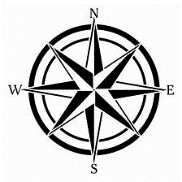














Monika and Tom, miss you both on St.Croix. USVI
Brilliant Pictures!!! 🥰
LikeLike
Thanks, Bob! See you in November 🙂
LikeLike